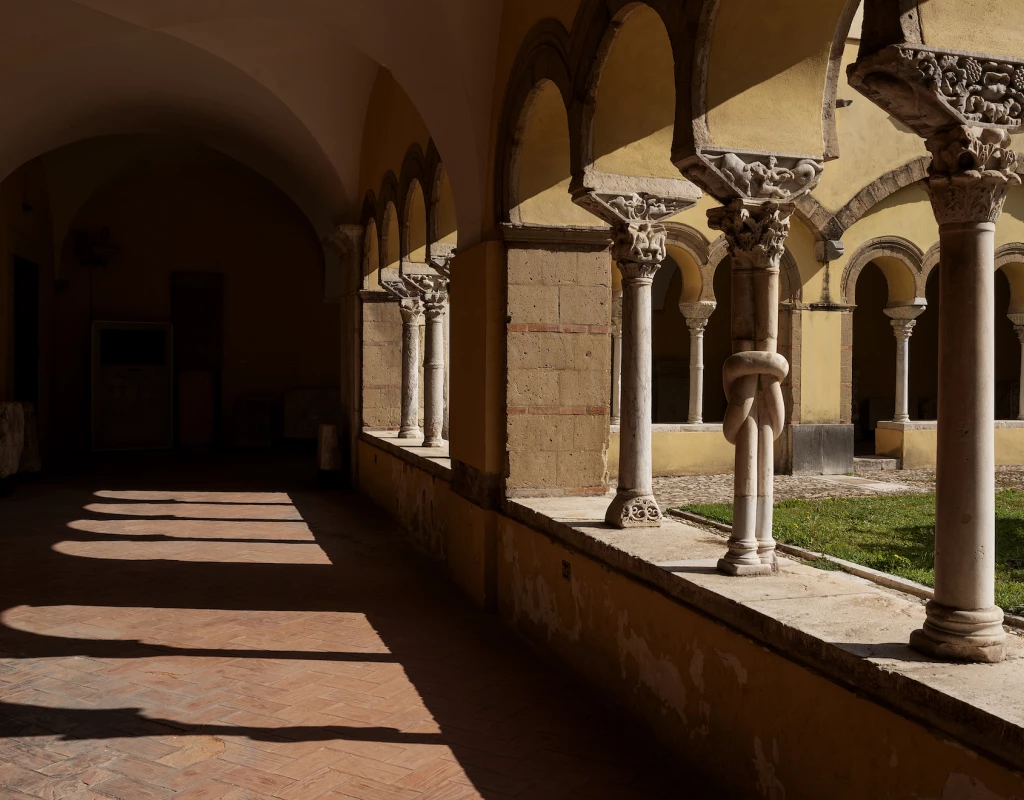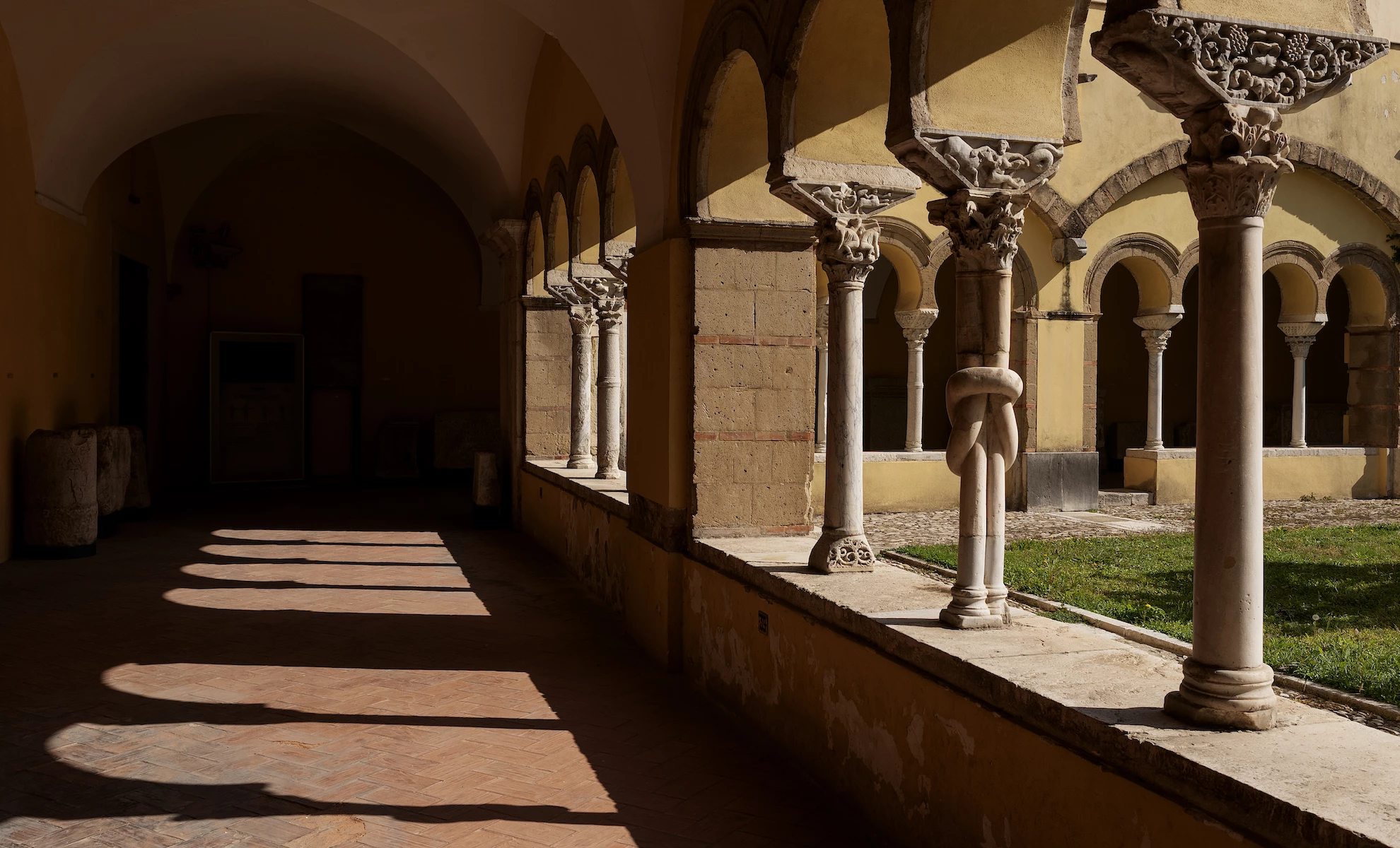Benevento is the city of the Arch of Trajan, of the witches, of the liqueur “Strega” (witch, indeed) with its golden color and spicy fragrance. But above all it is the city of the Lombards: they arrived here between the 6th and 7th centuries BC and gave birth to the most important center of the “Langobardia minor”.
La facciata di Santa Sofia - Ph. Anna Monaco
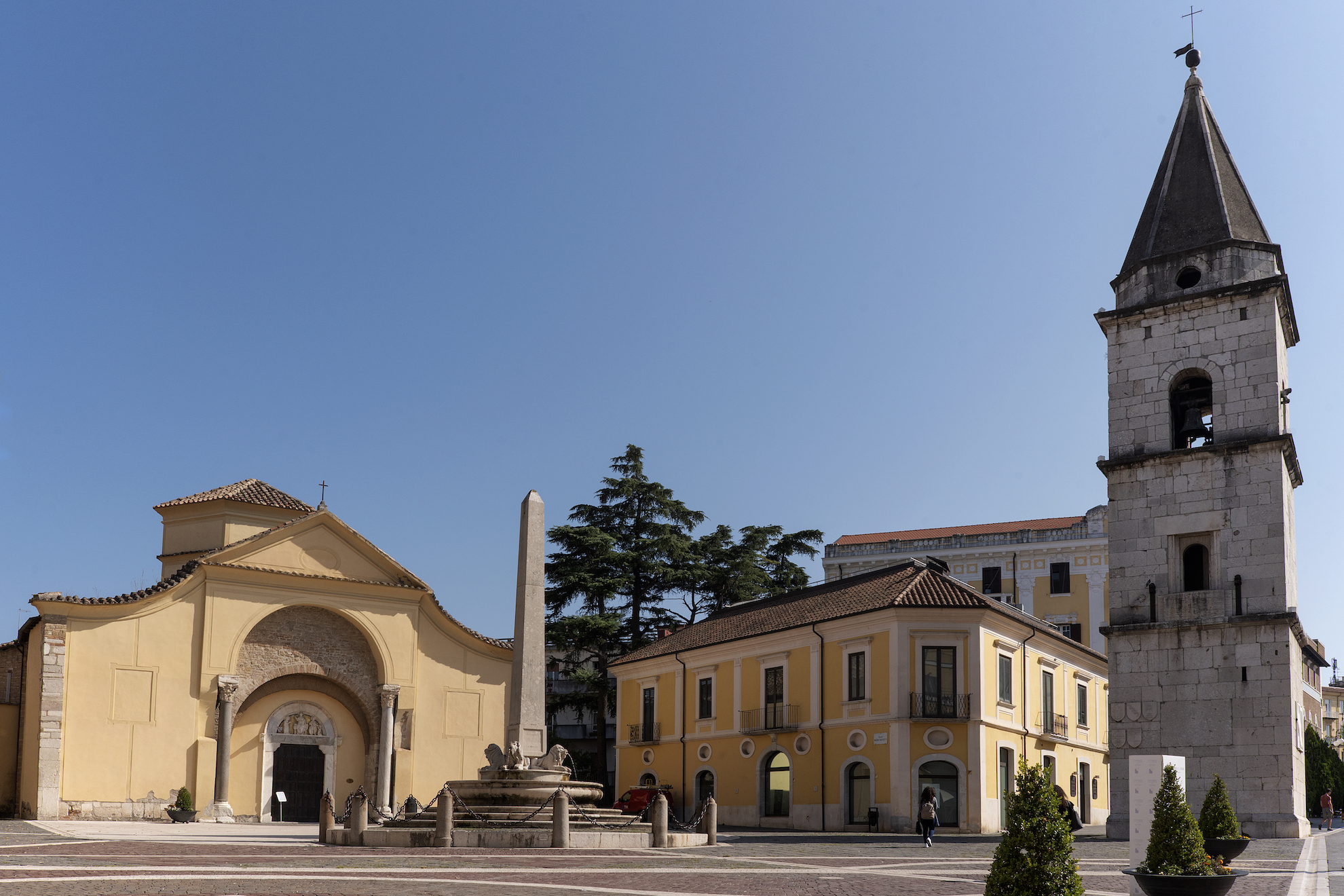
In this Campania city precisely you can find one of the “places of power of the Lombards”, which UNESCO recognized in 2011 as a world heritage site. This is the Church of Santa Sofia, built in the 8th century by Arechi II, duke first and then Lombard prince. Even today, despite earthquakes and restorations, it saves its medieval charme especially in the frescoes, important fragment of a bright past.
In the cloister there are "knotted" columns - Ph. Anna Monaco

A twisted column - Ph. Anna Monaco
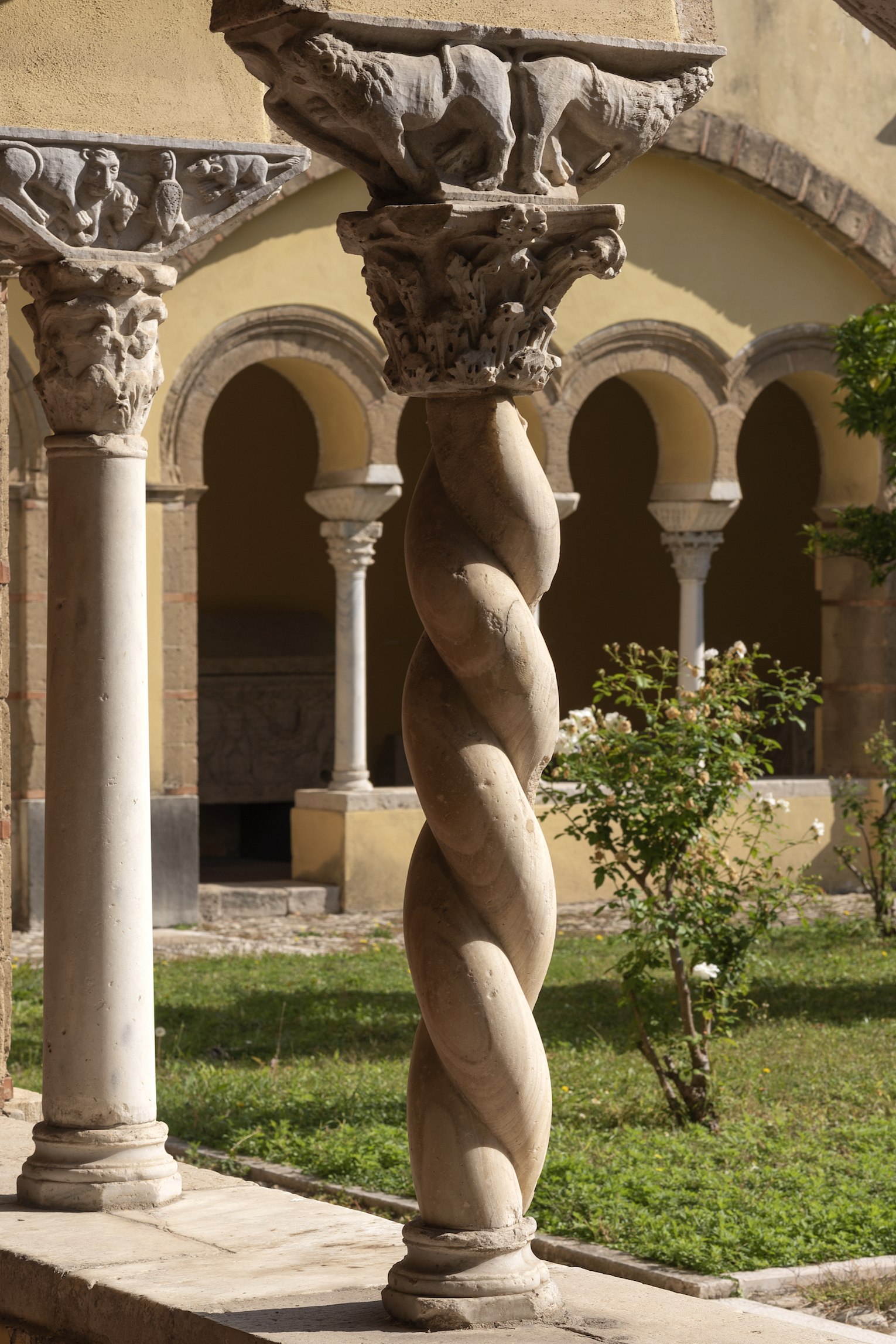
Close to the church, beyond a gate, the cloister is a space in which time seems suspended, immersed in a deep silence. Today in the corridors of the cloister a section of the Sannio Museum has been set up, but once there were the Benedictines monks and nuns, at the behest of Arechi II. This was a place of prayer, but also of a culture due to the presence of a scriptorium, in which the famous Benevento calligraphy was developed.
Thanks to the quiet, while visiting the cloister it’s not difficult to imagine the monks immersed in their readings or in contemplation, or intent on observing the details of the capitals that decorate the columns.
The cloister from above - Ph. Anna Monaco
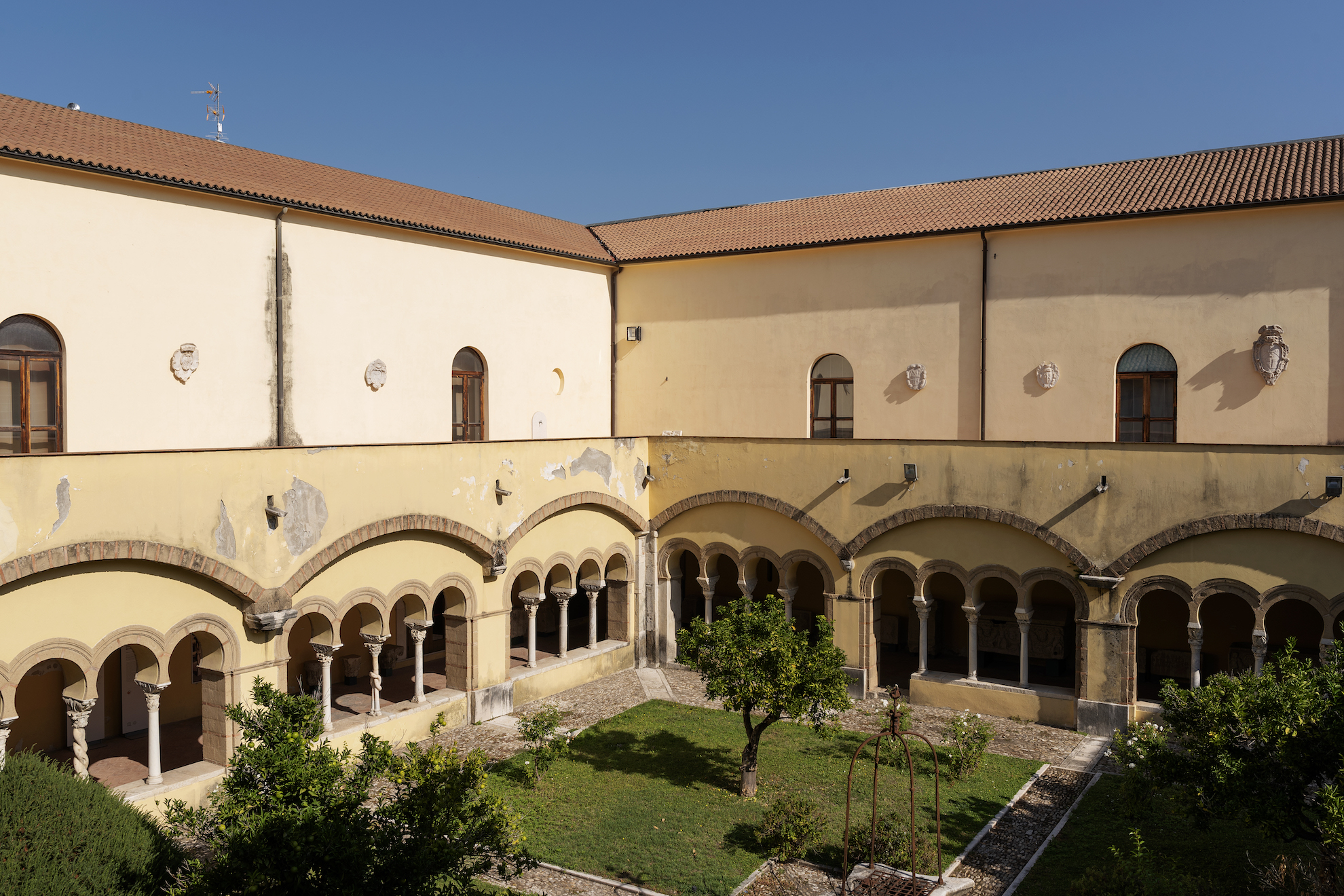
The columns are numerous and slender, they run on the four sides of the cloister, some are joined by a knot. They are decorated with capitals all different from each other, with an unusual shape, as if they were a trapezoid. This type of architecture is called “a crutch”. They are all features that remember the Romanesque art, and, in fact, today's cloister was built in the XII century, when Giovanni IV was abbot.
“Perpetuis annis stat quarti fama Johannis, per quem pastorem domus hunc habet ista decorem”
“For years without end the good name of John the Fourth abides. It is to him as shepherd this house owes its beauty”Inscription on a capital of the Cloister
The eye would like to embrace this corner of paradise, but the columns impose a rhythm on observation. We need to linger on each of them, because each capital has a story to tell. There are not only, as one would expect, images linked to faith, but also an articulated range of characters intent on all human actions.
Harvest scene - Ph. Anna Monaco

The sculptors have adapted the reliefs to the narrow space of the capital, not leaving out fanciful details inserted in small scenes full of meaning. Among these there are men intent on harvesting: the decoration illustrating the year and the seasons through agricultural activities are part of the month cycle.
Men riding on elephants - Ph. Anna Monaco
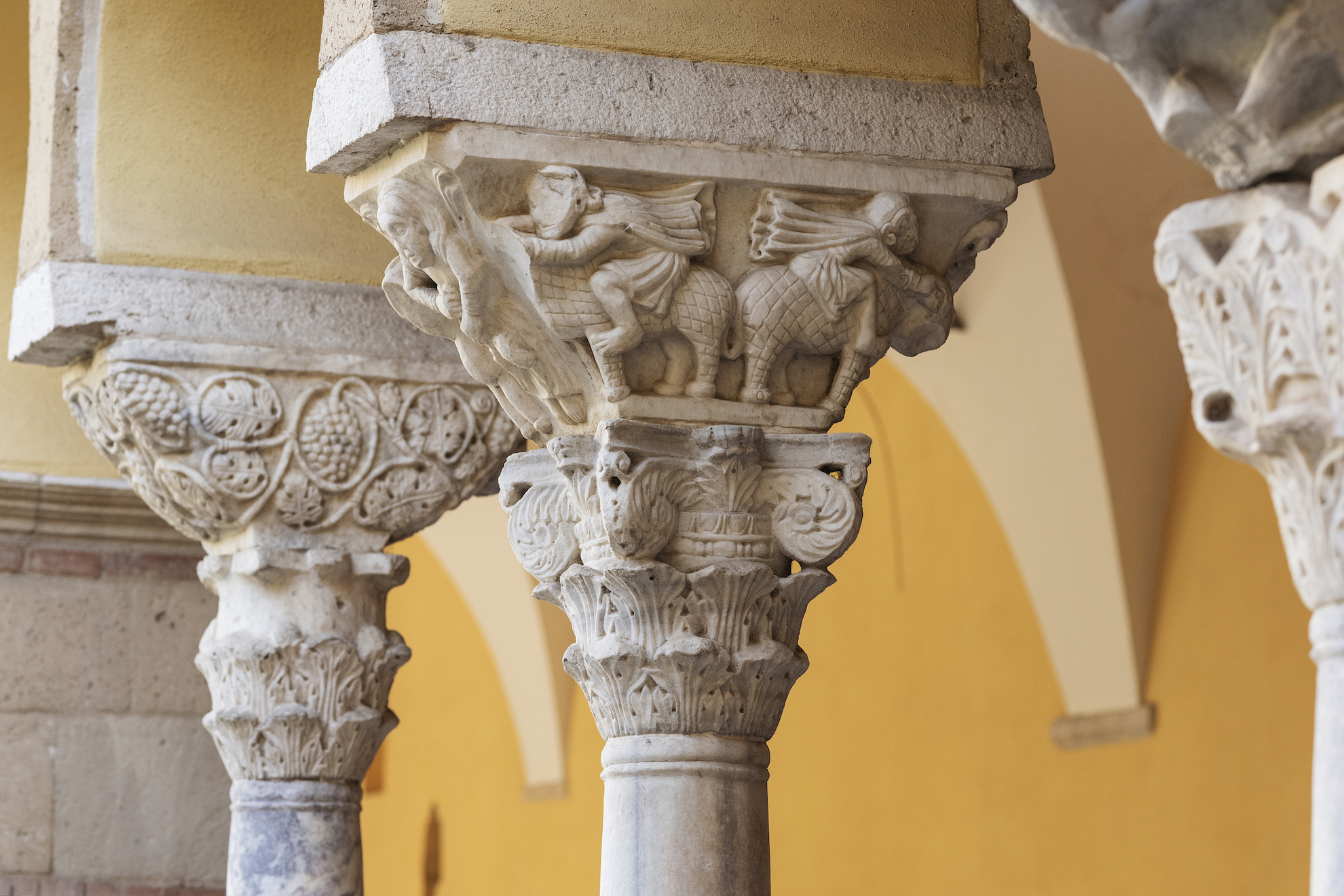
There is a decoration dedicated to the life of Christ, one that shows the tetramorph, an image consisting of the four symbols of the evangelists, and some biblical themes. These are tiny figures that the eye used to seeing details is able to capture. And how not to notice the many capitals dedicated to battle scenes: knights who face each other, animals that attack each other, but also an elephant, dragons and centaurs. An exciting medieval bestiary in a few square centimeters.
